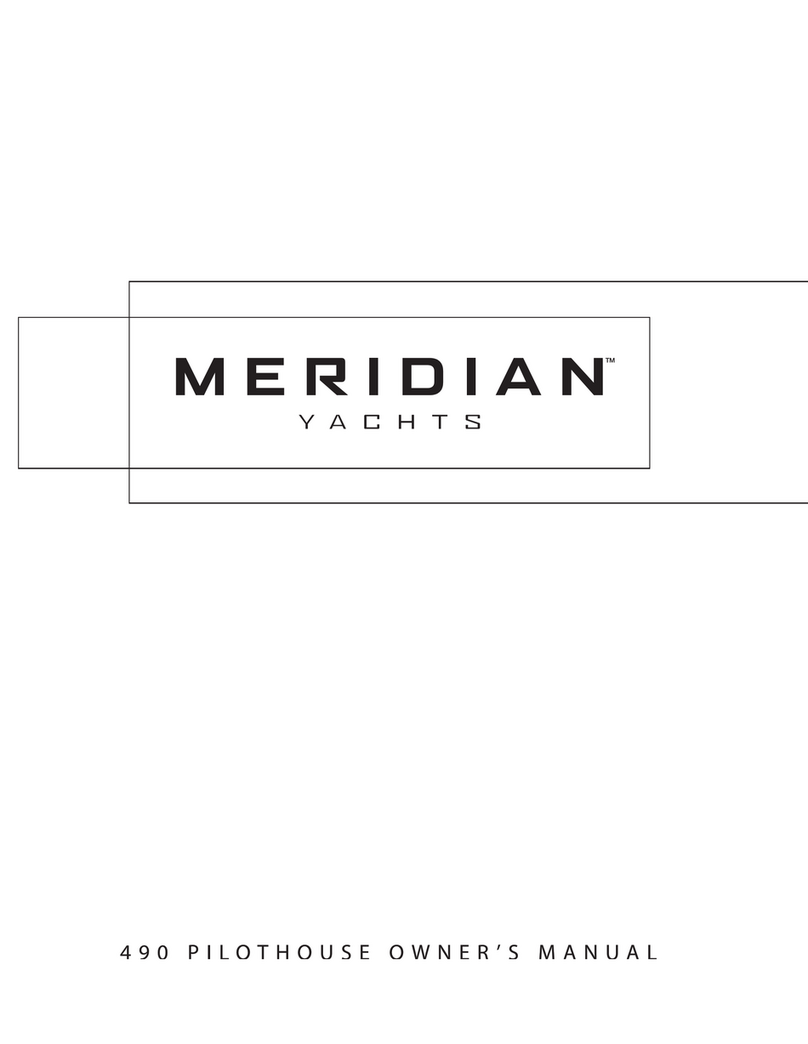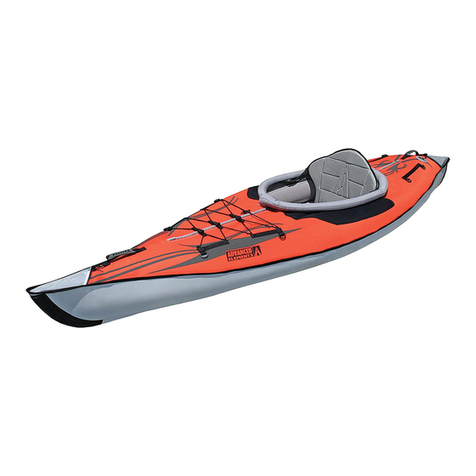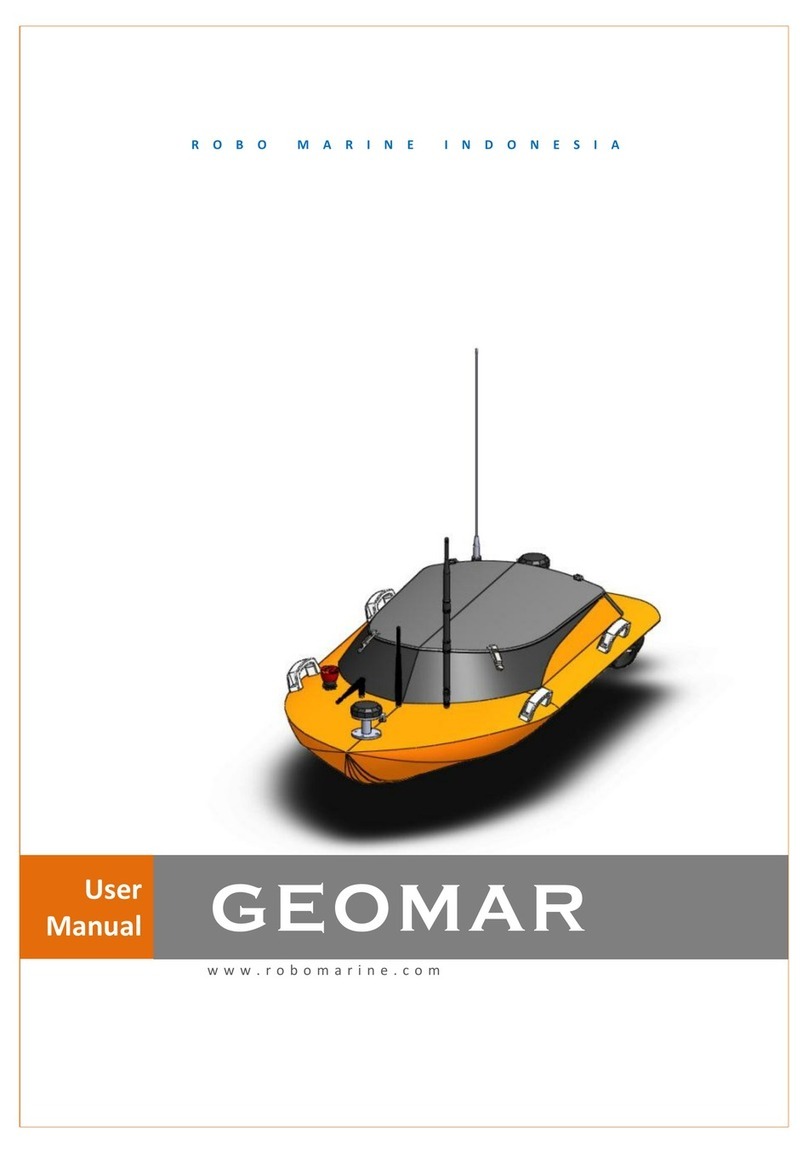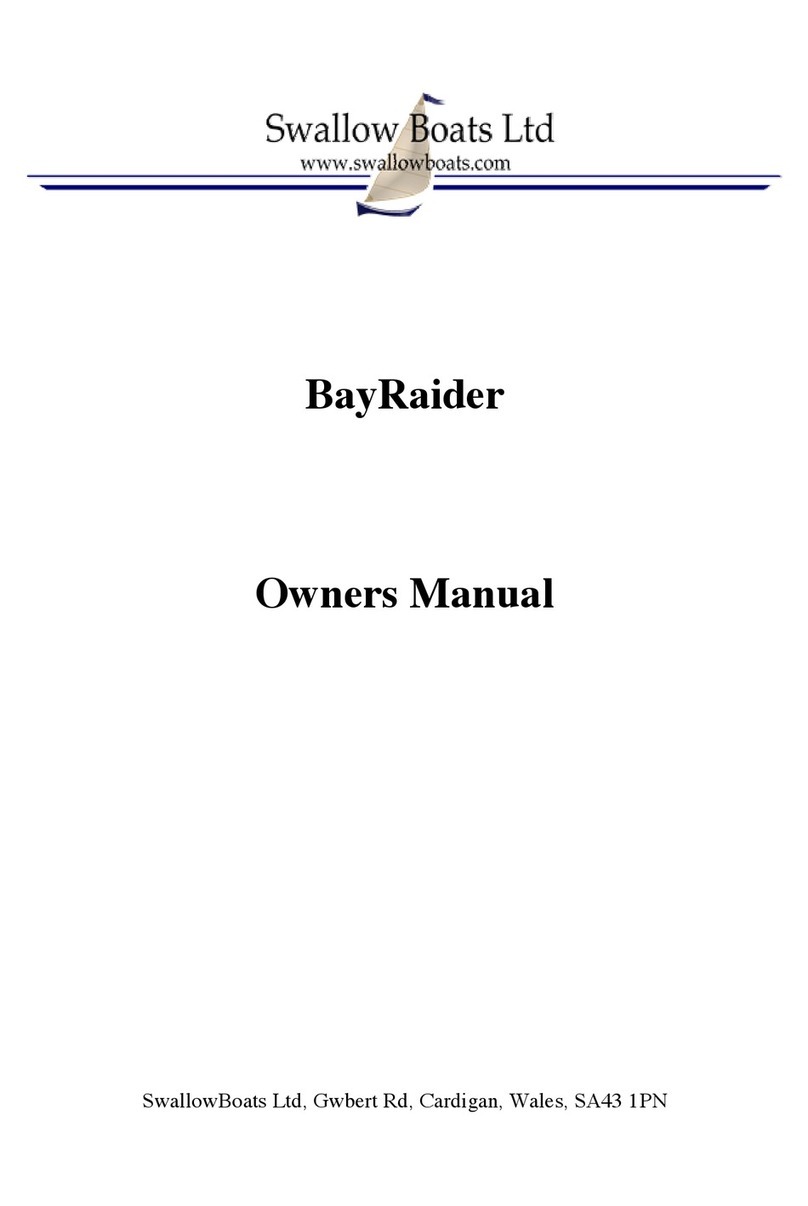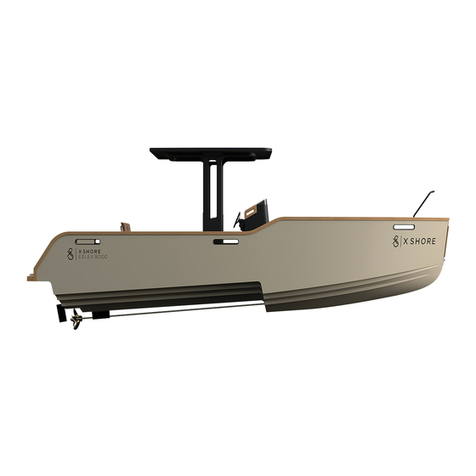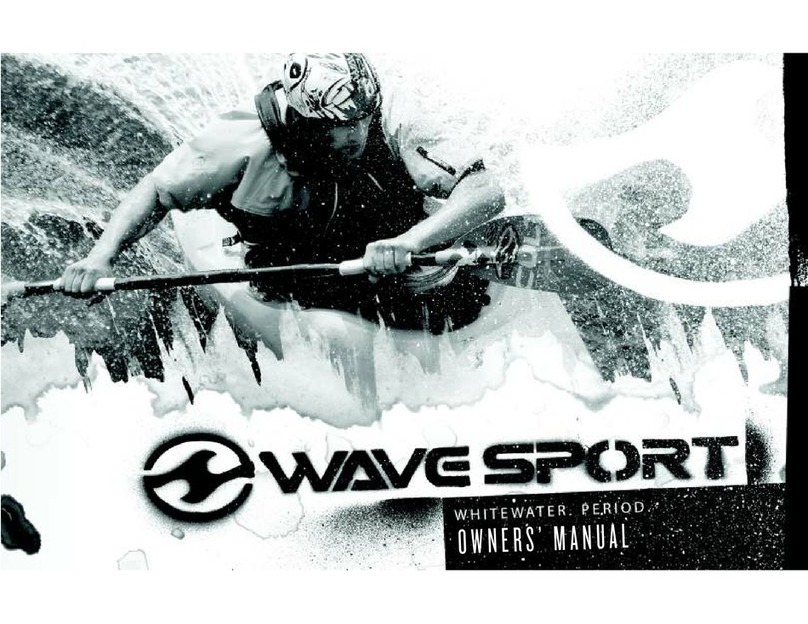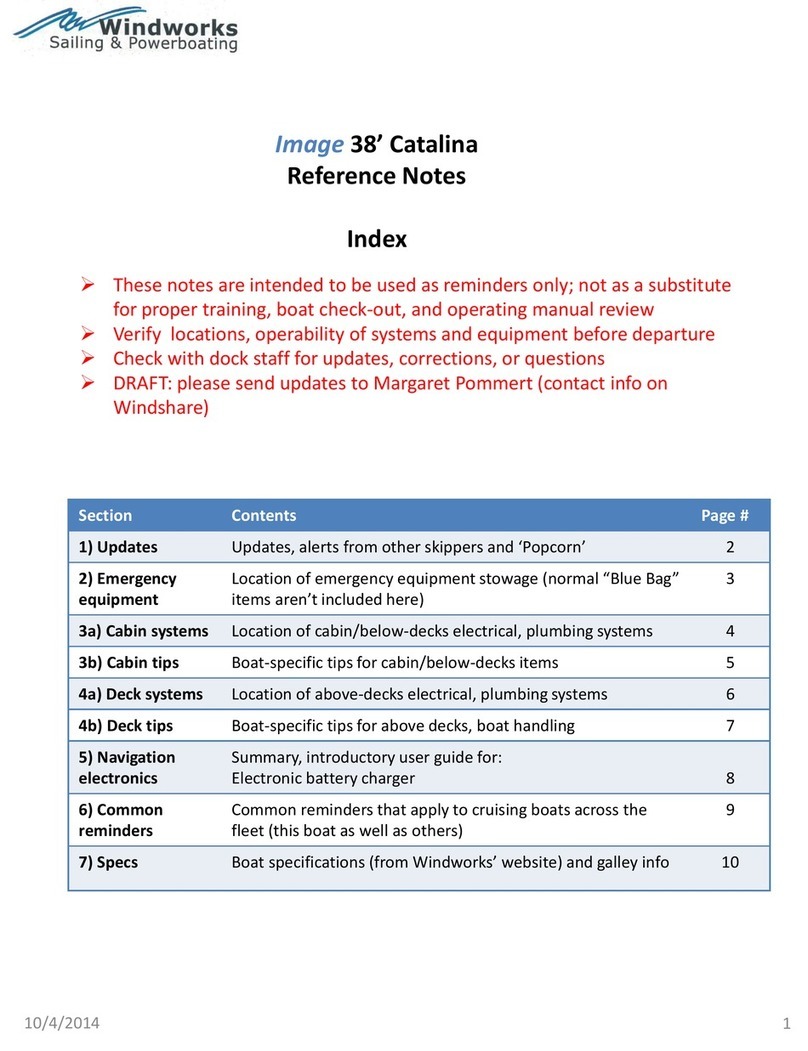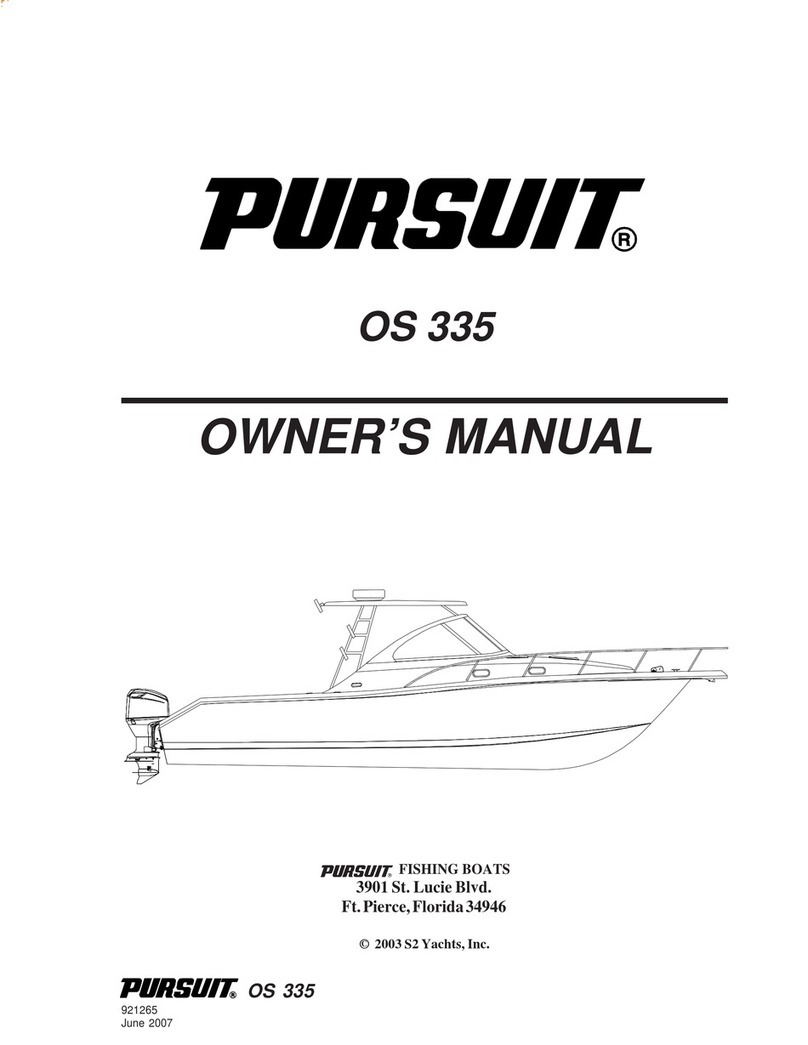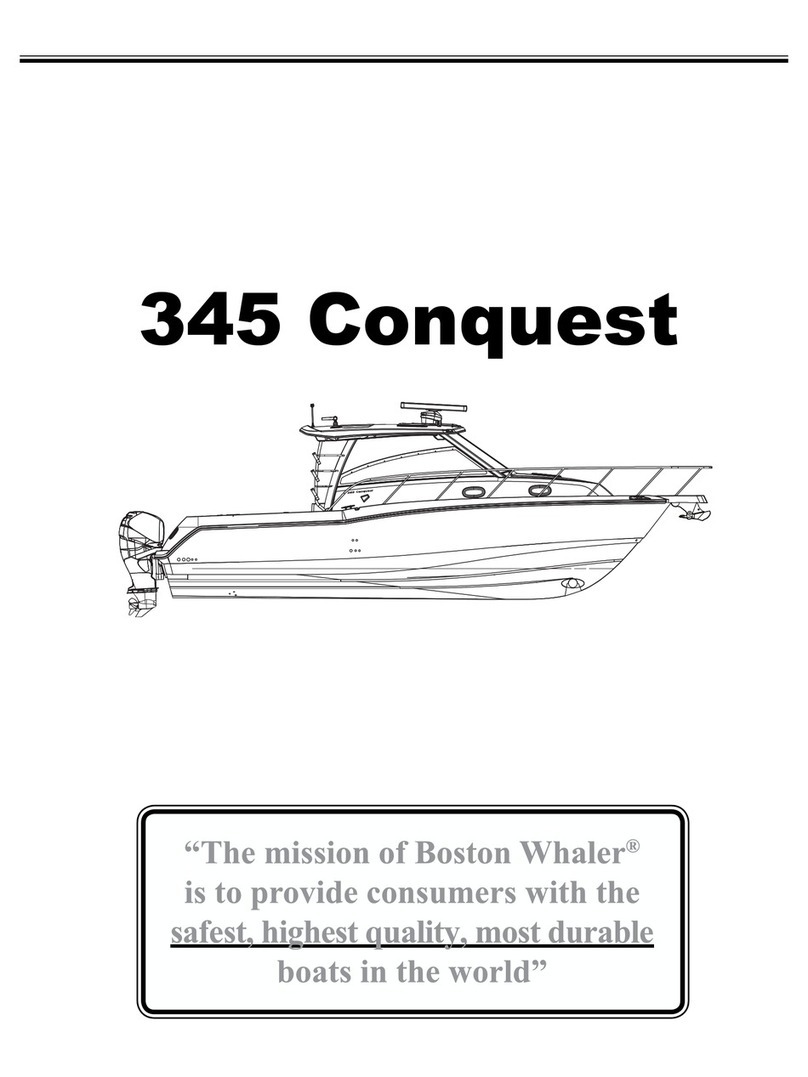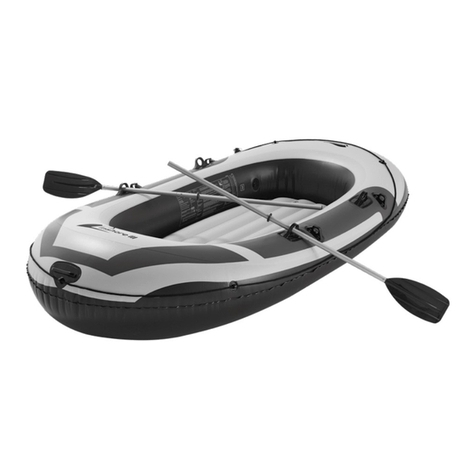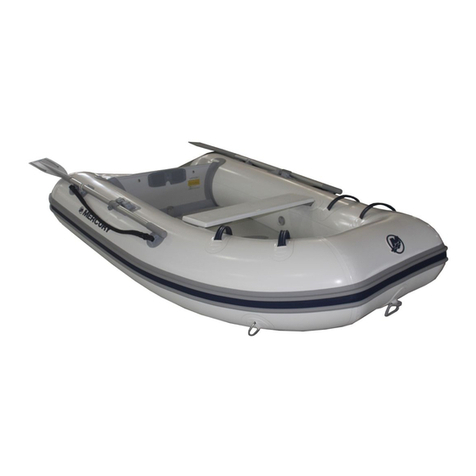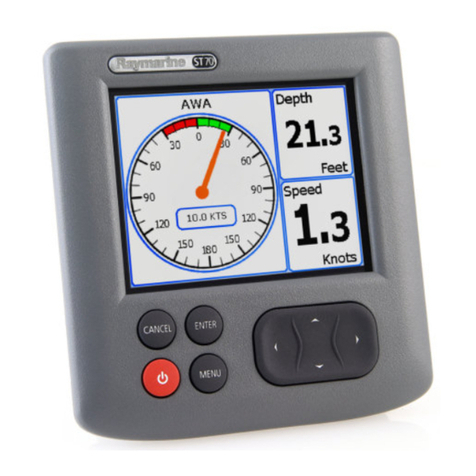98
LIMITED WARRANTY
OBTAINING WARRANTY SERVICE
If you have a problem with your kayak and you suspect that it
may be due to defective materials or workmanship, contact
the nearest authorized Wave Sport dealer and arrange to
have the problem inspected. Consumer is responsible for
delivery to, and pickup from, the closest authorized dealer.
If the authorized Wave Sport dealer’s inspection indicates a
defect that is attributable to materials or workmanship,
Conuence Outdoor will repair or replace your Wave Sport
kayak free of charge at the company’s option, based on the
type of kayak and time of ownership corresponding to the
warranty coverage schedule detailed above. Proof of
purchase such as a sales receipt may be required. If repairs or
evaluation are required by Wave Sport at its manufacturing
facility, the Consumer will be responsible for a $50.00
shipping and handling fee.
If service is required in a country that is not the country of
purchase, Consumer will comply with all applicable export
laws and regulations and be responsible for all customs
duties, value add tax (VAT), and other associated taxes and
charges. For international service, theWave Sport Distributor
may repair or exchange defective products and parts with
comparable products and parts that comply with local standards.
Conuence Outdoor retains the right to satisfy warranty via
repair or replacement of products or of components
deemed defective. In addition, Wave Sport reserves the right
to replace original kayaks or equipment with comparable
current products.
LIMITATIONS AND EXCLUSIONS
This limited warranty does not apply to:
• Normal wear and tear and aging of product.
• Kayaks damaged by extreme weather or environmental
conditions.
• Kayaks damaged while in possession of a freight carrier, a
dealer, Consumer, or any party other than Wave Sport.
TERMS AND CONDITIONS
For the original retail purchaser (“Consumer”), Wave Sport
kayaks by Conuence Outdoor are warranted against
material or manufacturing defects in the hull and deck for
three (3) years from the date of original purchase of the
kayak. Parts, accessories, and outtting are warranted for
a period of one (1) year against material or manufacturing
defects from the date of purchase.
The following schedule details whitewater kayak coverage
levels during the warranty term:
During the rst year of ownership, this warranty covers
repair or replacement of the hull, deck, outtting, and all
parts and accessories at 100% of the original retail price.
During the second year of ownership, this warranty covers
repair or replacement of the hull and deck up to 80% of the
original retail price.
During the third year of ownership, this warranty covers
repair or replacement of the hull and deck up to 60% of the
original retail price.
Wave Sport kayaks sold as“2nd quality” as indicated on the
MSO are covered under this limited warranty for one (1)
year from the original purchase date for the hull, deck,
outtting, and all parts and accessories.
This limited warranty is only valid with the purchase of a
Wave Sport kayak from a Wave Sport authorized dealer. This
warranty is non-transferable.
HOW TO REGISTER YOUR BOAT
The warranty registration form should be completed
online at www.wavesport.com within 30 days of original
purchase to be activated. It is suggested that you keep
your sales receipt should it be required in the future for
proof of purchase.
• Kayaks damaged by accident, neglect, improper use or
handling.
• Kayaks that have been towed by power or sail boats.
• Kayaks designated as Prototypes.
• Kayaks sold as “demos”or in “as is” condition.
• Kayaks determined to have been used for any activity
other than an activity which is customary for the product.
• Kayaks that have been structurally or dimensionally
altered or modied.
• Kayaks used for commercial or rental purposes.
This limited warranty excludes all other warranties,
expressed or implied, including implied warranties of
merchantability and tness for a particular purpose, with
regard to Wave Sport kayaks. Some state, country, or
provincial laws do not allow the exclusion of certain implied
warranties, so the above exclusion may not apply to you.
This limited warranty excludes any incidental or consequential
damages or expenses resulting from any defects. Conuence
Outdoor’s aggregate liability shall be limited to an amount equal
to Consumer’s original purchase price paid for the defective
product. Some state, country, or provincial laws do not allow the
exclusion or limitation of incidental or consequential damages,
so the above exclusion may not apply to you.
To the extent any limitation or exclusion contained herein is
contrary to any country, state, or provincial law, such limitation
or exclusion shall be severable and all other terms herein shall
remain in full force and eect and are valid and enforceable.
This warranty gives you specic legal rights and you may
also have other rights. For Consumers who are covered by
state, country or provincial consumer protection laws or
regulations, the benets from this warranty are in addition
to all rights conveyed by such consumer protection laws and
regulations.
SERVICE & SUPPORT
QUESTIONS?
Visit our Frequently Asked Questions section at
www.wavesport.com to answer these and many other
commonly asked questions about our kayaks and
accessories:
How do I adjust the seat?
How do I move the footbraces for solo paddling?
How do I use the skeg?
How can I get replacement parts?
What other accessories are available for my kayak?
FINDING YOUR SERIAL NUMBER
The serial number is located near the stern (rear) of the boat,
just below the line where the deck and side meet. On most
boats it is engraved in an indention on the right side of the boat.
NOTICE: STATE REGULATIONS
Some states require that all kayaks be registered.To register
your kayak you will need your Manufacturer’s Statement of
Origin (MSO). This serves as the title to your kayak and
should have been provided when you took delivery. If not,
check with your retailer. If it has been lost, have your dealer
contact Wave Sport and we will provide a replacement.
Note: Make sure the serial number on your MSO matches
that on your hull.
SERVICE AND SUPPORT
If you have a problem with your kayak that you believe is
covered under warranty, contact the nearest authorized
dealer. You can nd a listing of all dealers on our website.
If you have additional questions about your kayak or
accessories, please visit our online support webpage at
www.wavesport.com for resources or to nd information
on contacting a customer service representative.
CONTACT US
(p) 888-52-KAYAK (888-525-2925)
(f) 888-373-1220
Service and support hours are Monday through Friday from
9 a.m. to 5:30 p.m. EST.
All warranties and part orders need to be handled through
an authorized dealer, we do not sell direct.
IMPORTANT INFORMATION
Boat Model:
Serial Number:
Date of Purchase:
Dealer Name:

